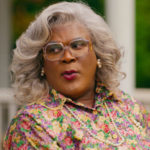DaVinci Resolve Studio Used on 'The Dressmaker'
October 8, 2015, 11:51 AM
https://www.aotg.com/davinci-resolve-studio-used-on-the-dressmaker/
Based on the book by Rosalie Ham, “The Dressmaker†takes place in the 1950s and follows Myrtle ‘Tilly’ Dunnage (Kate Winslet) as she returns to her hometown to take care of her ill mother, Molly (Judy Davis), from whom she was sent away at the age of ten because of false accusations of murder. Tilly, an expert dressmaker, transforms the locals with her couture creations and in the process, exacts revenge on the people who wrongly accused her of murder all those years ago. The film is produced by Sue Maslin, directed by Jocelyn Moorhouse and also stars Liam Hemsworth, Hugo Weaving and Sarah Snook.
“I made the decision to take ‘The Dressmaker’ to Soundfirm as it is a ‘one stop shop' for state of the art sound and picture post production and enabled us to work with a world class team of professionals who cared deeply about the story,†said Sue. “I couldn't be happier with the creative results that Resolve delivered in the hands of Don McAlpine and Trish Cahill."
According to Trish, the look of the film needed to be true to the dry Australian landscape it is set in, but it also needed to remain rich and beautiful. “Don McAlpine is a master cinematographer, so as you can imagine, the film came to me with wonderful meat and bones already,†said Trish. â€After the initial balance was in place, we looked for little things to enhance each frame, such as a chop at the top of frame here or an extra bit of sunshine on a patch of grass there.â€
She continued: “We had the opportunity to experiment a little with the memory scenes where Kate Winslet’s character remembers moments from her childhood, which needed to look different from the present. We ended up with a moody contrast look with a desaturated, ashy palette. Wherever we had skies and silhouette trees we graded, keyed and dropped the mids. There was definitely a focus on the environment.â€
In one day for night shot, the camera is on a dolly moving towards a silo, and Trish was tasked with retaining this camera movement while creating a starry nighttime sky. “It fell into place very quickly using Resolve’s super fast tracker for grades and the intuitive keyer to control the various areas of the image,†said Trish. “The very next shot is the two main characters gazing up at the stars and talking about the night sky, and the shot needed stars. I made numerous one pixel windows with a slight blur and lots of brightness and started moving them all over the place, occasionally making some brighter than others to recreate the randomness of a starry sky. The consensus in the room judging on a still frame was that it worked well.â€
However, once the scene was played back, the stars needed more integration into the shot as the camera dollied forward. “Luckily for us, Resolve's shape tracker and stabilizing tools are fantastic, so one run through at real time with default settings on the stabilizer tool and bam! DaVinci Resolve made the stars sit perfectly into the night sky without any loss of our wonderful dolly effect,†said Trish.
DaVinci Resolve Studio’s tracker also proved beneficial when protecting the performances and subtlety of the actors’ eyes and faces while maintaining the rich and tonal look for the film. “We have gorgeous actors with beautiful blue eyes, which were sometimes a challenge to maintain in warmly lit scenes. This is where Resolve’s tracker also came in handy,†said Trish. “To be able to go through the film and highlight the moments and selective colors we needed and yet keep the frame rich, vivid and inviting on a whole was a case of having our cake and eating it too.â€
Trish concluded: “The shape tracker allows for a colorist to keep the match and the beauty of a scene and also keep the performance and draw subtle attention to the moments that enhance the film. Without this intelligent and fast tool, you would have to keep a very strict priorities list of what could be achieved in the timeframe, because these things can take time. Now I find myself leaping into the tough stuff without hesitation and without having to do mental calculations as to whether this will blow out the schedule.â€
DaVinci Resolve Studio was also used for the online edit of the film at Soundfirm, which has a number of Resolve Studio suites in both its Melbourne and Sydney facilities. And according to Jonathan Burton, digital imaging supervisor at Soundfirm, “The flexibility of the system really allowed for it to form the backbone of the DI post workflow, especially given that the production wanted to retain the 4K RAW files all the way to the final mastering of the film.â€
He explained: “Resolve was used as the primary conform tool at Soundfirm Melbourne where the offline edit of the film was also done. There is a big advantage in being able to conform the film as the edit progresses, allowing the production to go between the online and offline versions of the cut and ultimately reflect any minor edit tweaks until the final picture lock off. Resolve was next used to handle all of the VFX I/O, creating deliveries to go to the VFX team along with temp grades, reviews and returns of VFX finals to go back into the online.
“The final conformed Resolve projects were then sent up to our grading theatre at Fox Studios in Sydney, and DaVinci Resolve’s Consolidate Clips tool was used to move all the media and manage the transition between facilities,†added Jonathan. “Overall the integration of DaVinci Resolve between Soundfirm's multiple facilities allowed us to manage the complexities of the workflow in the simplest and most effective post pathway.â€
He concluded: “Overall I would say the biggest benefit is the flexibility of the system. Purely as a grading tool Resolve is fantastic and a top choice by colorists the world over, but from the point of view of a post house, the ability to use the same system across multiple facilities for everything in the DI path is a very powerful asset."
Press Photography
Product photos of DaVinci Resolve and all other Blackmagic Design products are available at www.blackmagicdesign.com/press/images.
About Blackmagic Design
Blackmagic Design creates the world’s highest quality video editing products, digital film cameras, color correctors, video converters, video monitoring, routers, live production switchers, disk recorders, waveform monitors and real time film scanners for the feature film, post production and television broadcast industries. Blackmagic Design’s DeckLink capture cards launched a revolution in quality and affordability in post production, while the company’s Emmy™ award winning DaVinci color correction products have dominated the television and film industry since 1984. Blackmagic Design continues ground breaking innovations including 6G-SDI and 12G-SDI products and stereoscopic 3D and Ultra HD workflows. Founded by world leading post production editors and engineers, Blackmagic Design has offices in the USA, UK, Japan, Singapore and Australia. For more information, please go to www.blackmagicdesign.com.
Blackmagic Design today announced that the Australian film “The Dressmaker” was graded using DaVinci Resolve Studio by Trish Cahill at Melbourne and Sydney, Australia based post production facility Soundfirm.
#blackmagic design#davinci resolve#soundfirm#the dressmaker
Newest from AOTG.com
-

Daniel George McDonald on Editing Cheer's Season 2 Finale
Daniel George McDonald sits down to discuss creating the finale for Cheer Season 2.
-

Editing The Black Lady Sketch Show
Gordon sits down with the editorial team of The Black Lady Sketch Show to discuss their approach to ...
-

Philip White on Crafting A Madea Homecoming's Music
Gordon sits down with Philip to discuss his work with Tyler Perry and his latest film A Madea Homeco...
Site Links
Tools
Sister Sites
© 2007-2025 www.aotg.com Ver. 3.0 All Content created and posted by Art of the Guillotine users Art of the Guillotine graphics, logos, designs, page headers, button icons, scripts, and other service names are the trademarks of Art of the Guillotine Inc. Use of this material outside of this site is strictly prohibited.